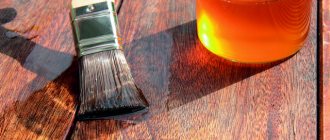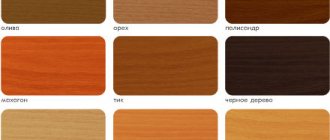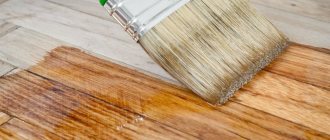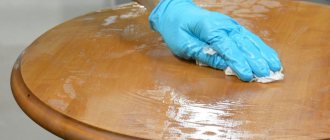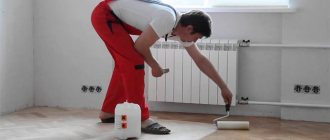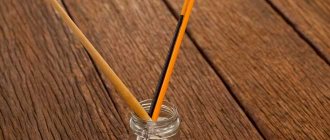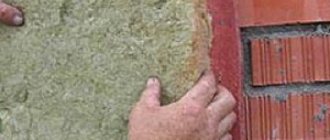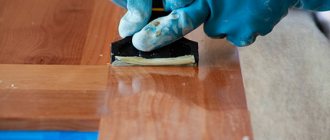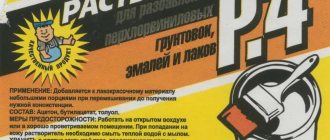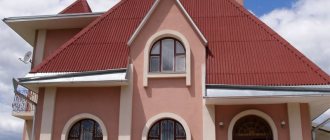Varnishing surfaces, products and materials is an excellent way to decorate and protect from moisture, temperature and damage. Varnishes are used for household and industrial purposes. The compositions can be used to coat wooden, metal, plaster, brick, and concrete surfaces - a specific varnish is suitable for each material. To ensure that the composition acquires the viscosity required for work, varnish thinner is used. The product differs from the solvent in its characteristics and purpose.
Dilute, dilute or dissolve
At first glance, there is no difference. Using a special tool, we bring the varnish substance into “working condition”. A solvent is a liquid that dissolves dried varnish, bringing it from a solid to a liquid state. We use a thinner if we need to change (reduce) the viscosity of paints.
Some types of organic eluents perform both roles, but some may be effective in one task and completely useless in another. For example, white spirit can be used to dilute compositions of polyurethane, alkyd and oil groups. But if the varnish has dried, it will not be possible to dissolve it with white spirit.
White spirit can be used to thin some varnishes.
But shellacs, on the contrary, are equally dissolved and diluted with denatured alcohols. But let's not go into such subtle details.
If you need advice on what to thin varnish or what to use for thinning paints, it is better to consult with specialists in this field.
We propose to consider in detail which solvents need to be used in specific cases.
Technical standards
- Alkyd and urethane varnishes can be used subject to the following technical specifications:
- The presence of organic (volatile) compounds is a maximum of 0.5 kilograms per 1 liter.
- The moisture content of wood material should not be higher than 18%.
- The optimal temperature for use should be +9-25 degrees, and humidity – 35-75%.
- If the paint and varnish composition is applied correctly, the consumption of 1 liter should not exceed 9-12 square meters.
- Drying time – 3 hours.
- Shelf life warranty – 5 years.
Polyurethane mixtures
Polyurethane varnishes, paints, primers, adhesives, etc. contain polyurethane - a modern polymer. The totality of its properties surpasses such well-known materials as rubber, plastic, rubber, and metal. To obtain high-strength paint and adhesive solutions, in industrial production it (polyurethane) is mixed with special chemicals.
A lot of polyurethane varnishes are also water-based. This parquet chemistry is environmentally friendly and non-toxic.
If it is necessary to make the substance more liquid, you can use the following as a diluent for polyurethane compounds:
- toluene;
- xylene;
- acetone;
- eluents such as R-4, R-5.
It is not recommended to add alcohols, water, or type 646 eluents.
Acetone is a good thinner for polyurethane varnishes.
Groups of thinners and solvents
When using chemicals and paints and varnishes, it becomes necessary to prepare a working composition of the required consistency. A varnish thinner is a product that reduces the viscosity and density of a composition. The solvent is used to soften the structure of the dried substance, that is, in cases where it is necessary to remove the coating or clean work equipment.
All solvents and thinners are classified into five main groups:
- Petroleum and aromatic hydrocarbons. Popular distillates are white spirit, kerosene, paraffin, xylene, toluene, and petroleum jelly. Used to dilute oil and polyurethane products.
- Glycol ethers. Can be used as a binding component for water-based stains and paints. Glycol ethers are used to dilute and dissolve nitro varnishes.
- Ketones. Widely used as industrial solvents and paint thinners. A common diluent in the ketone group is acetone, used to dilute polyurethane substances and nitro varnishes.
- Alcohols. Diluents are included as independent components or in combination with esters or ketones. Suitable for alcohol-based compositions, shellac, nitro varnish.
- Ethers. Ethers are used to dilute film formers based on glyphthalic resins. Esters are used to dissolve any compositions with nitrocellulose.
The terms solvent and diluent are often used interchangeably. The difference between them is that some can be diluted with solid, while others can be diluted with liquid film formers. But some products are universal - they both dilute and dissolve compounds.
On video: what is the difference between solvents and thinners.
Alkyd mixtures
Alkyd compounds have good adhesion, moisture resistance, insensitivity to ultraviolet radiation, and strength. They can be used for external and internal work. Alkyd mixtures contain a main component, organic solvents, driers (for faster drying), and additives. The main component may be:
- pentaphthalic resin;
- glypthal resin with cotton oil;
- a mixture of melamine-formaldehyde and alkyd resins.
To enhance the properties of materials, elements of alkyd resins are often included in multicomponent varnishes, paints, and enamels. The traditional thinner here is white spirit.
Advantages and disadvantages
Among the advantages of alkyd varnishes are the following characteristics:
- have good resistance to temperature changes and various levels of air humidity. Similar compositions, such as oil-based varnishes, have lower stability;
- increased resistance to vibration loads;
- alkyd solutions do not have adhesive properties, so when applied to floors, the wood will not make squeaks;
- excellent decorative properties. Alkyd varnish is well suited for wood; it penetrates deeply into this material, while highlighting and emphasizing the natural pattern and texture of the wood;
- very convenient to apply, as they have a fairly viscous consistency;
- you can choose either glossy or matte shine, which is formed after polymerization;
- high resistance to physical and mechanical stress, as well as damage;
- resistance to all kinds of chemicals and detergents;
- if alkyd varnish is applied to protect the metal, then corrosion or rust will not appear on the surface;
- When applied to wood, fungi and mold will not appear.
Despite the above advantages, alkyd varnish has several disadvantages:
- relatively long drying time. Typically, the drying time for alkyd varnishes is 1-2 days, but if the composition contains special hardener additives, this period will be reduced;
- during the drying period, the composition emits a not very pleasant odor; the characteristics of alkyd varnish are such that the vapors of this mixture cannot be inhaled during drying, they can harm human health. Therefore, during the polymerization period, you need to open the windows to ventilate the room;
- if you apply too thick a layer of varnish, the coating will begin to wrinkle, so it is better to apply several thin layers, following the instructions;
- Typically, the service life of a varnished floor is approximately 3 years, which is why alkyd solutions are more often used for treating furniture.
Bitumen mixtures
Bituminous varnish is a mixture of a special grade of bitumen, various resins and oils. After drying, a durable black film is formed on the surface, moisture-resistant and impervious to chemical attack. It is considered a fairly new material in household use. Belongs to the inexpensive category. It is often used as an anti-corrosion protective layer.
For wooden surfaces it is used when there is no need to emphasize the natural texture of the base (instead of paints). Bituminous material has found application as a decorative coating for the effect of aging surfaces (patina). Another unique feature of bitumen mixtures is cold gluing. The bitumen solution is diluted with white spirit.
To prevent it from thickening during storage, the container must be airtight. The storage location should be dark (without direct sunlight), with moderate temperature and humidity.
Bituminous varnish protects the surface very well from moisture and chemical influences, diluted with white spirit
Why remove old varnish?
First of all, let's look at why you need to remove old varnish at all. Of course, in principle, you can apply new paintwork over it, but in this case, some surface imperfections will still be visible. In addition, the new composition must match the old one, otherwise it simply will not work.
Therefore, in order to guarantee a high-quality result, it is better to clean the wooden surface with your own hands, and only then apply a new paint coating to it. In addition, such surface cleaning provides a choice of means to renew the wood texture. For example, before applying a new composition, you can emphasize the wood grain and give it a certain shade with stain.
The photo shows an example of an old cracked varnish coating
However, when starting this procedure, it should be borne in mind that in any case, removing varnish from wood is a rather painstaking procedure. Moreover, it requires caution to prevent damage to the wood. It should also be taken into account that the task is complicated by the volatility of the funds used for these purposes.
Below we will look at how to remove varnish from a wooden surface in compliance with all requirements.
Wood removers
Yacht varnishes
Yacht (or yacht) varnish is one of the most effective means of protecting natural wood surfaces. Already from the name the features of the area where it is used are clear. At the same time, the yacht composition is excellent for woodworking inside and outside of any objects (not just boats, boats, yachts). It is impervious to moisture, temperatures, and aggressive environments.
Yacht varnish. Basic properties:
- high degree of protection of wooden structures;
- physical and mechanical immunity to the influence of external environments;
- durability, extending the life of wood.
To achieve such results, toxic chemical elements (toluene, xylene) are used in the production of the material. There are several production technologies:
- alkyd yacht (based on the organic solvent white spirit);
- urethane-alkyd yacht (the eluent is the same, but in smaller quantities);
- alkyd-urethane yacht (solvent additives are highly volatile);
- acrylates (water-based compounds).
Dilutes yacht varnish with white spirit, no more than 5% of the total volume. The solvent acts on the substance only in its fresh form. After drying, the varnished parquet coating will become impervious.
Varnish for yachts, boats, boats has high wear resistance and can also be diluted with white spirit
Catalog
Ask a question https://poli-r.ru/article/alkidni-ili-akrilovi-lak
TD Poly-R LLC https://poli-r.ru Shcherbinka urban district, Simferopol highway, building 15/1 Moscow Moscow 142171 Russia +7 TD Poly-R LLC https://poli-r.ru Shcherbinka urban district, Simferopolskoye highway, house 15/1 Moscow Moscow 142171 Russia +7
The difference between alkyd-urethane and acrylic (water-based) varnishes, pros and cons.
Modern industry offers the buyer a choice of two types of coatings for one application, acrylic latex and alkyd resin. When making a choice, the buyer is based primarily on his own experience or on the advice of friends, and since alkyd products appeared on the shelves of our country much earlier, there is much more experience in the use and operation of such coatings, and aqueous solvent products produced in earlier times were not durable. Hence, most people have a stereotype that water-based products are not durable and can easily be washed off during wet cleaning. The purpose of this article is to tell you what the differences are between aqua varnishes and alkyd-urethane-based varnishes, what are the pros and cons of both products.
Compound
The basis of aqua varnishes is not water at all, but acrylic polymer. Plexiglas is a good example of the use of acrylic polymer. The basis of alkyd varnishes is alkyd-urethane resin, which is most often made from a combination of sunflower oil and polyhydric alcohols.
Basic properties
After complete polymerization, acrylic polymer is not afraid of significant temperature changes, exposure to ultraviolet radiation, or prolonged contact with water. Therefore, the acrylic polymer film retains its condition unchanged for a long time, and the color of the wood also remains virtually unchanged. This makes it possible to carry out local repairs of individual areas. And probably the most important plus is that acrylic varnishes use water as a solvent and have virtually no odor, which makes work more comfortable.
The final polymerization of acrylic latex takes from a week to a month (aqua varnish for parquet “POLI-R” gains hardness after 7 days). Until this happens, the surface must be protected from mechanical damage. The components used in the production of acrylic varnishes are more expensive, which affects the final price of the product. Aqua varnishes are a little more difficult to apply and require some skill. It is necessary to carefully smooth the varnish over the surface with a special brush with synthetic bristles, avoiding sagging, drips, and bubbles.
The alkyd resin film is smoother and harder. Alkyd resins polymerize much faster, and the surfaces are ready for use (alkyd parquet varnish “POLI-R” is ready for full use 3 days after applying the finishing layer). Alkyd varnishes are easy to work with; all brush marks are self-leveling, so even non-professionals can get good results.
The main disadvantage is the smell, which each person treats individually, some will find it strong, while others will not pay attention to it (alkyd parquet varnish “POLI-R” is Turkish-made, therefore it uses a solvent purified from essential oils, and accordingly has a weaker odor). Alkyd varnishes always have an amber tint, and accordingly, the color of any wood acquires a yellowish tint, which becomes more saturated under the influence of ultraviolet radiation. Because of this, the previous coating will always be different from the fresh one, so if an area is damaged, the entire coating will have to be redone.
conclusions
So, from the information described above, we can draw the following - acrylic varnishes have much greater advantages in terms of characteristics with regard to the application and operation of coatings, but the acrylic resin itself is weaker in characteristics than alkyd. Therefore, it is necessary to choose a floor varnish that contains a large amount of polyurethane - another type of polymer that has excellent wear-resistant and other useful characteristics, and is not harmful to health.
Therefore, parquet aqua varnish “POLI-R” containing a large amount of polyurethane is suitable not only for floors, but also for doors, children’s and adult furniture, walls, decoupage and much more. It is recommended to use “White House” acrylic varnish to cover surfaces that are not subject to severe physical wear, since they do not contain polyurethane, but these varnishes will easily withstand weather conditions.
Consumption
The level of consumption of alkyd varnish directly depends on the type of composition used, as well as the professionalism of the craftsman performing the treatment. Manufacturers and experts agree that the composition should be applied in several layers. Usually 2-3 layers are required. It is very important to begin applying the next layer only after the previous one has completely hardened. Based on this, you can understand that the work will take at least 2 days.
The average consumption of alkyd mixtures is 50-70 g/m2. Some types of alkyd varnishes must be diluted before application.
How to process other materials?
Varnishing, intended to impart a protective layer, is also used on other substrates. For example, cardboard, liquid wallpaper, paper, plastic, metal, etc.
Even old tiles can be updated with this solution. But it must be a special composition; the usual one is not suitable. Such a coating must necessarily contain: a primer; special tile mortar.
First apply a primer. Next, the tiles are coated with the product.
Nail treatment after extensions
The use of biogel for nail extensions is a new service. But this method of improvement has gained popularity among modern women. Biogel helps create an irresistible image, while no negative effects from the indicated composition on the nail plate are noted.
Among the main advantages of biogel is its ability to change the color of nails when a woman wants it. The base will remain stable and intact if there is no acetone in the nail polish remover.
Briefly about the main thing
There are three ways to remove nail polish.
The mechanical option involves the use of brushes, scrapers, abrasives and similar replacement equipment for power tools.
The chemical method involves the use of liquids, gels, pastes and powders to prepare a working mass that softens the varnish coating.
Thermal option - exposure to the surface using a hair dryer and subsequent removal of the coating with a metal spatula.
Each of the methods is accompanied by the formation of dust or the release of toxic substances, so you need to work using protective gloves, goggles and a respirator.
The choice of method is determined by the thickness of the old coating, the nature of the varnish and working base, and the purpose of the event.
Ratings 0
Varieties
Most often, alkyd-urethane products are intended for wood; there are two main types of such varnishes. The difference lies in the area of application:
- Yacht, which is used for outdoor work;
- Alkyd urethane parquet varnish is suitable for interior work.
Both types have subspecies - one-component and two-component. The second type is more durable and waterproof, but it must be diluted before work. The first one is immediately ready for application.
There is also a division according to the resulting effect on the surface - matte, semi-matte, glossy.
Most often, alkyd-urethane products are intended for wood.
Main parameters of acrylic products
These materials are water based. They are used for interior work because they are water-based.
Often used in bedrooms and children's rooms. Apply with a spray gun, roller or brush.
The advantages of this material:
- They have environmentally friendly ingredients because they do not contain organic thinners.
- Fire safety.
- Does not emit toxins, odorless.
- Good strength.
- High level of elasticity.
- Colorless, without a yellow tint, do not change the natural tone of the wood.
- The gloss can be different (glossy, semi-matte or semi-glossy).
Minuses:
- The acrylic composition dries faster than alkyd compositions (in just 24 hours), which is convenient when applying several layers. But to obtain a durable film you need to wait about 10-14 days.
- Such products cannot be used in rooms where there is a lot of traffic.
So, the base may become rough or begin to peel. But, if there is no other way out, then you need to apply a primer layer.
This way you can get a much better quality finish.
What it is?
This composition is a mixture of synthetic resins and natural solvents. The components of the varnish provide it with a high level of adhesion and resistance to moisture.
The quality requirements for alkyd products establish certain standards that the composition must meet - first of all, the varnish must be colorless and form a glossy or matte protective layer on the surface. Some products may have a certain shade. The mixture allows you to increase the aesthetic appeal of the base, emphasizing the depth of color, which is important, for example, for a parquet floor.
As a result of use, the treated surface becomes more attractive. However, the choice of a particular product should be based on personal preferences and the area of use of the surface. Alkyd varnishes differ somewhat in their specificity and chemical content, depending on whether they are used for interior or exterior use.
Alkyd mixtures are widely in demand in comparison with their analogues. This is due to the performance properties of the products, which are several times higher than the existing indicators of oil compositions.
Alkyd varnishes: types and their characteristics
Treatment with protective compounds is necessary for almost every material and surface, especially substrates subject to mechanical stress or factors that negatively affect their condition and appearance. This issue is relevant for both wood and metal. There are many different products on the market recommended for such materials, among which alkyd varnishes can be distinguished.
Patent 2374283
This document contains all the necessary detailed information about paint and varnish products. By studying patent 2374283, you will find out which group the paint and varnish material belongs to, its scope of application, composition, advantages, properties, technical characteristics.
The patent describes in detail what pigments are used to produce different colors. What are the stages of enamel production? Each stage is described in detail. For example, at the first stage it lays down the main components, pigments. After receiving the mass, the second stage begins. Additional components can already be added to it to improve and enhance certain properties.
https://youtube.com/watch?v=-T9O5j5fR4M
Renewing woodwork with varnish remover
Using professional removers to remove varnish from wood allows you to quickly and effectively restore the attractive appearance of old furniture. Due to the presence of active acids and chemical compounds in the composition, the substance penetrates into the deepest layers and destroys them; the forming substance is removed with a spatula, after which the surface can be prepared for new processing.
To clean surfaces in a horizontal plane, it is better to use liquid products; for vertical work (for example, when restoring a cabinet), paste-like, gel-like compounds are more convenient - they are tightly held in the selected area and do not spread. All manipulations take place in several stages:
- the remover is applied to the surface, the area is covered with plastic wrap, and allowed to sit within the time period specified in the instructions;
- peeling particles are removed manually using a non-sharp spatula;
- wash off the remaining varnish and chemical reagents using a rag and running water;
- Dry the treated area thoroughly.
If necessary, the products are sanded, but usually it is enough to remove the old layer of varnish before applying a new one. With the help of such an effective product as a remover, you can quickly bring furniture, decoration, and interior decor to a modern look.
Scope of application
In addition to wooden surfaces, other materials can also be treated with a polyurethane mixture.
Let's consider the main area of application of this coating:
- as additional protection for walls, floors and ceilings made of various materials;
- protection of wooden furniture and stairs from chemical and mechanical influences;
- formation of a transparent film on ceramic tiles, as well as impregnation of surfaces made of concrete, brick walls and slate roofing;
- to obtain the effect of a wet stone;
- to protect mineral substrates from corrosion;
- protection and improvement of the aesthetic qualities of parquet flooring;
- to protect stone, metal and concrete bases from rust formation.
How to dilute varnish on wood
Varnishing surfaces, products and materials is an excellent way to decorate and protect from moisture, temperature and damage. Varnishes are used for household and industrial purposes. The compositions can be used to coat wooden, metal, plaster, brick, and concrete surfaces - a specific varnish is suitable for each material. To ensure that the composition acquires the viscosity required for work, varnish thinner is used. The product differs from the solvent in its characteristics and purpose.
Groups of thinners and solvents
When using chemicals and paints and varnishes, it becomes necessary to prepare a working composition of the required consistency. A varnish thinner is a product that reduces the viscosity and density of a composition. The solvent is used to soften the structure of the dried substance, that is, in cases where it is necessary to remove the coating or clean work equipment.
All solvents and thinners are classified into five main groups:
- Petroleum and aromatic hydrocarbons. Popular distillates are white spirit, kerosene, paraffin, xylene, toluene, and petroleum jelly. Used to dilute oil and polyurethane products.
- Glycol ethers. Can be used as a binding component for water-based stains and paints. Glycol ethers are used to dilute and dissolve nitro varnishes.
- Ketones. Widely used as industrial solvents and paint thinners. A common diluent in the ketone group is acetone, used to dilute polyurethane substances and nitro varnishes.
- Alcohols. Diluents are included as independent components or in combination with esters or ketones. Suitable for alcohol-based compositions, shellac, nitro varnish.
- Ethers. Ethers are used to dilute film formers based on glyphthalic resins. Esters are used to dissolve any compositions with nitrocellulose.
The terms solvent and diluent are often used interchangeably. The difference between them is that some can be diluted with solid, while others can be diluted with liquid film formers. But some products are universal - they both dilute and dissolve compounds.
On video: what is the difference between solvents and thinners.
Types of varnishes for wood processing
The most widely used compositions are for varnishing wooden surfaces. Wood varnish prevents the material from rotting when exposed to moisture, protects against mold and mildew and preserves the beautiful wood texture; it can highlight and change the color of the wooden surface. In order for wood varnish to adhere well to the workpiece (panel, furniture, souvenir, floor covering), the working fluid must be given the required viscosity.
The thinner is selected depending on the composition of the film former. There are several types of funds:
- Alkyd. Components: pentaphthalic, glyphthalic, alkyd, melamine-formaldehyde resin in combination with organic solvents and driers. Alkyd varnishes are characterized by good adhesion, moisture resistance, and neutrality to ultraviolet radiation.
- Polyurethane. The main component is a polyurethane polymer combined with special chemicals. They are highly resistant to abrasion, protect wood well from moisture, and form a durable elastic film.
- Bitumen. The composition includes bitumen in combination with resins and oils. Once dissolved and applied to a wooden surface, it leaves a layer of black film. They are used to decorate products using patination technology with the effect of artificial aging.
- Yachting. Yacht paintwork materials show high resistance to contact with moisture and are characterized by a long service life and durability. Yacht varnish is resistant to temperature and aggressive environments. Yacht varnish is used for interior and exterior work.
- Oily. They contain solutions of natural or synthetic resins, modified with vegetable oils with the addition of solvents and driers. After application, they form a durable yellowish film.
- Nitrocellulose. Nitrocellulose substances are based on cellulose nitrate dissolved in organic solvents. Nitrovarnishes dry quickly, protect treated wood well from moisture, and form a uniform varnish film on the surface.
- Petroleum polymers. Resistant to chemicals and detergents. It is obtained by combining petroleum polymer resins with solvents and modifying additives. Wood compositions show high abrasion resistance.
Selecting a thinner
To choose the right varnish thinner, you need to know the component composition of the substance or the group to which the paint and varnish material belongs. A specific thinner is suitable for each varnish. It is necessary to choose a means to dilute rather than dissolve the substance.
Wood and wood products are widely used in construction, the manufacture of furniture, wall panels, flooring and other interior items, and are also used for the manufacture of windows, doors, and stairs. The quality of wood coating determines its service life. Varnishing is the most effective way to decorate and protect wood material. To apply the coating, the working composition must be moderately liquid.
How to dilute varnish from various components:
- To reduce the viscosity of alkyd varnish, white spirit is used. Yacht varnish is also diluted with white spirit.
- To dilute polyurethane substances, toluene, xylene, acetone, and solvents R-4 and R-5 are used.
- Nitrovarnish can be dissolved to the desired consistency using a combined mixture of toluene and xylene.
- Oil and polyurethane varnishes are diluted with turpentine, white spirit and solvent.
- Alcohol-based thinners are suitable for diluting nitro varnishes and shellacs.
- Glycol ether dilutes water-based compositions and nitrocellulose varnishes.
- A hardener is first added to epoxy compositions and then diluted with a mixture of xylene, acetone and ethylcellulose.
- Water-based products are diluted with water in an amount of no more than 10 percent of the varnish volume.
- Acetone can be used to dilute mixtures based on epoxy and natural resins, and for yacht paints and varnishes, white spirit is used in an amount of 5%!
The introduction of a diluent reduces the viscosity of the liquid. To remove any remaining dried product, solvents are applied to the treated surface. They are used to clean tools and equipment used in varnishing.
After softening, the varnish film is removed with a thin spatula. If the layer is very durable, it can be removed from the wooden surface by scraping and processing with coarse and fine-grained abrasives and sandpaper.
Main types of solvents
All compositions that are used for diluting and diluting varnishes differ in properties. When working with them, you must adhere to basic precautions - use personal protective equipment, beware of getting the solvent in your eyes, nose and mouth, and ventilate the room. Almost all compositions are fire hazardous and require proper storage and careful use.
The most common thinners:
- White spirit - has an average evaporation rate, is practically odorless, dilutes yacht and other varnishes.
- Solvent - evaporates quickly, highly flammable, flammable.
- Ethyl alcohol is a colorless solvent liquid with a specific odor that spontaneously ignites at 402 degrees.
- Petroleum benzene is insoluble in aqueous solution and interacts with gasoline, kerosene and turpentine.
- Turpentine - dries slowly, smells unpleasant, can spontaneously ignite, suitable for diluting oil varnishes.
- Solvents for nitro varnishes – improve the quality of the film-forming agent and ensure good adhesion of the coating.
- Methanol is a dangerous, toxic solvent; it dilutes shellac and alcohol-based compositions well.
- Butyl alcohol - dilutes nitrocellulose paints and varnishes, gives the varnish shine and mechanical strength.
- Ethylene glycol is a viscous, odorless substance that is used to dilute the composition.
- Methyl acetate - evaporates and dries quickly, the substance is highly toxic.
- Butyl acetate is a yellowish substance that takes a long time to evaporate from the surface, increasing the drying time of the varnish.
- Ethyl acetate is a pleasant-smelling substance with a high evaporation rate.
- Acetone - dissolves and dilutes most varnishes, has an unpleasant, pronounced odor.
Popular brands of solvents are 646 and 647. Solvent 646 is a mixture of several components that, when combined, dilute epoxy and acrylic varnishes well. The 647th solvent consists of toluene, butanol, ethyl acetate and butyl acetate. Used to dilute nitro varnishes.
Solvent P-4 contains a compound of esters, ketones and aromatic carbons. Suitable for thinning varnishes based on vinyl acetate and its copolymers.
Using a varnish thinner allows you to obtain the working composition of the required consistency and give the coating additional strength. The applied layer becomes uniform, the composition is easy to work with using rollers or paint brushes.
Yacht varnish can be matte or glossy. The matte finish does not add shine to wooden products and hides dust and dirt well. A floor covered with a matte composition is more practical , as it does not require careful maintenance.
The glossy coating gives the floor a special shine and looks very elegant, but requires constant specialized care.
The composition of yacht varnishes can be:
- alkyd;
- alkyd-urethane;
- urethane-alkyd;
- acrylate.
Alkyd compositions are the most popular . This is explained by the adequate price-quality ratio of the coating, high wear resistance and the ability to penetrate deeply into the pores of wood. Among the disadvantages of alkyd varnishes: the release of toxic fumes while the coating dries. The evaporation continues even after the substance has completely dried, although it is no longer as strong. They can cause allergies in the residents of the house .
The alkyd-urethane composition has a fast drying time (no more than 6 hours). When working with these solutions, you must use gloves and a respirator.
Urethane-alkyd compositions are less toxic than previous ones. This is explained by the presence of urethane plasticizers in the composition, which prevent harmful substances from evaporating and increase the resistance of the varnish film to temperature fluctuations. Urethane-alkyd varnishes can be used in any room, including heated floors.
The basis of acrylate compositions is water, due to which the toxicity of these varnishes is minimized. This coating is not highly durable or waterproof, but it can even be used in a child’s room.
How to dilute the thickened product?
Another mistake often made when working with yacht varnish is trying to dilute a product that has thickened with denatured alcohol to make it suitable for further use. At first glance, the procedure allows you to achieve what you want. If the mixture is diluted with technical alcohol, it actually acquires the consistency necessary for painting wooden structures. However, it is impossible to predict how smoothly the varnish “improved” in the described way will lie on the surface being treated, how long it will take to dry after application, and whether it will retain its protective qualities.
Dried varnish can be diluted, but so that it does not lose its properties, this must be done correctly. To dilute the mixture, regardless of its composition, you can only use white spirit (and in an amount of no more than 5% of the volume of the product).
Pros and cons of alkyd-urethane varnish, application
Alkyd-urethane varnish is one of the most popular products on the paint and varnish market.
It is a mixture of urethane components and alkyd resins diluted with an organic solvent.
This product has a wide range of applications in construction and repair work and has excellent performance characteristics.
Advantages of polyurethane compounds
Let's look at the main advantages of varnishes with polyurethane additives. First of all, it is a high drying speed - up to 2 hours.
In addition, alkyd-urethane varnish is environmentally friendly and does not have a strong odor. It has excellent decorative properties: it emphasizes the texture, natural pattern and natural color of wood.
Another significant advantage of the material is that it protects the wooden surface from insects, mold and fungal attack.
Types and scope of application
Traditionally, alkyd-urethane varnish is used to coat wooden surfaces, but the composition can also be used to treat iron, stone, concrete and even glass. The main varieties of the product are yacht and parquet varnishes.
Parquet varnish is used primarily indoors. With its help, you can improve the appearance and increase the wear resistance of various products: furniture, stairs, railings, floors, frames and decorative items.
Thus, glossy products are best used in dark rooms or for small objects, while matte textures are more suitable for discreet interiors and surfaces subject to frequent dirt.
Preparatory activities and application technology
All types of polyurethane varnishes have a similar application technology. It is unacceptable to apply the composition under the influence of direct sunlight and drafts. First you need to clean the surface from grease stains, dirt and dust particles.
After the first layer has dried, it is recommended to apply a second one, perpendicular to the previous one. For highly porous wood species, apply 3 coats.
Alkyd-urethane varnish can be applied at temperatures from + 5...+10 C°. Before starting painting work, you should wear a respirator and gloves. If the composition gets on the skin, you can wash it off with water and soap.
Caring for painted surfaces
If the application technology is followed, its service life reaches from 7 to 10 years, which is good news. Polyurethane varnish coatings reach maximum hardness after 3-4 weeks. It is not recommended to use detergents to care for the painted surface at this time.
Conclusion
Alkyd-urethane varnishes have undeniable advantages. Surfaces treated with this modern product acquire an attractive, noble appearance, increase their service life, and increase their resistance to impacts and various weather conditions.
Also, varnishing prevents wood from rotting and is a reliable barrier to bacteria and insects. No professional training is required to work with it. Polyurethane varnish does not have a strong odor, is environmentally friendly, due to the elasticity of the material it is easily applied to the surface, dries quickly and lasts for many years.

